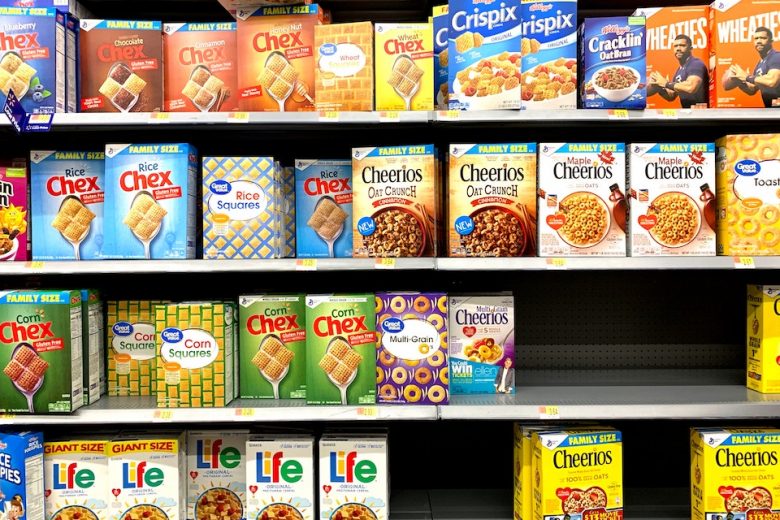Three things your packaging needs to do to help your food and drinks products sell
Want to help your food or drink products fly off the supermarket shelves? Here are three things your packaging needs to do.
What’s the first thing customers see when choosing products off supermarket shelves? The packaging.
This means you have split seconds to attract a customer’s attention, and signal that you’re a brand or product worth looking at – and possibly even buying. So everything from your packaging material, design and colour scheme, to your brand logo, messaging and industry approval are essential.
Three things your packaging needs to do to help your find and drinks products sell
To help your food and drink products stand out, and appeal to your ideal customers, we look at three things your packaging needs to do, with advice on how to get them right.
1) Your packaging needs to attract your target customer
Your packaging may be your first point of contact with your customer, and the first impression of your business. So, when you develop your food packaging design, your brand design should be impactful, and deliver the right message to potential purchasers.
If you embody sustainable and eco-friendly values, for example, this should be visibly incorporated into your imagery.
Colour has a fundamental role in perception, emotion and human behaviour: red can enhance your appetite, orange can stimulate your senses, and green is associated with health, vegetarianism and recyclable properties.
So use colour psychology and ensure that you choose the right colours for the message you want your brand to convey.
Other aspects to consider when developing your brand image are who is your ideal customer, and what the actual product is. Your packaging materials, design and messaging all need to be carefully chosen to appeal to the people who will love what you do – and buy it.
2) Your packaging needs to be the ‘face’ of your brand
Your brand image should offer a balance between shelf appeal (design and messaging) and the functional aspects – from food safety to the way your product should be used.
Customers are more likely to notice an eye-catching brand or packaging design on the shelves first; functionality is something they consider once they’ve plucked an item from the shelf.
Make sure all your product information is easy to read and understand. Customers want to find and understand the information they need quickly. If you’ve hidden vital information in a busy design, they’re more likely to put your product back than hunt for it on your packaging.
Given them ideas about how to use your product too, by displaying some of its uses, or suggesting ways they can consume or use it. You may even want to include simple but attractive recipes to whet their appetite, and make it easier for them to visualise using and enjoying your product.
You have a fraction of a second to grab a customer’s attention, and to ensure your product makes it into their basket, so making your selling points as clear as possible using your brand image is crucial.
A clear brand will also help increase trust and likability (especially if you’ve carefully designed your packaging for your ideal customer) and make it easier for them to remember and recognise your brand when shopping again.
Don’t forget to take your branding off your packaging too. To establish a customer-to-company relationship, keep your voice consistent across all marketing channels, including on products, social media, online and in store.
3) Your packaging needs to clearly display any relevant symbols
As we become more conscious of allergies and food preferences, it’s essential that your product packaging has the correct symbols – not just to ensure you comply with your legal obligations, but also to project a voice that yours is a brand that can be trusted.
So what information do you need to display on food packaging? Health warnings such as allergies, ingredients, the best before date and nutritional values should all be highly visible, and easy to understand.
You must also show any necessary warnings, net quantity information and the manufacturer, packer or seller information. This must all be easy to see and take in, without overwhelming your customers, or harming your brand.
Displaying any relevant industry logos or symbols will also help customers make confident and informed choices in accordance to their values and dietary requirements.
For example, with consumers increasingly favouring brands with a commitment to environmental sustainability, make sure you display the recyclable symbol on your products – if it is in fact recyclable.
And with 1 in 8 Britons now vegetarian or vegan, you’ll also want to promote any products that cater for this market by displaying the associated symbols.
Everyone has the right to know if the food they’re buying matches the description given on the packaging, and using recognised labels is an effective way to encourage buyers to purchase with confidence.
Get your packaging right – and help your products sell
Whether you’re planning a new product launch, or are considering updating your brand image to get your food or drink products flying off the shelves, we hope you’ll be inspired to harness manufacturing and design, and maximise their uses to your advantage.
You can read more tips to help you grow a food or drink business here:
- Four questions you need to ask to get your packaging right
- How to test your food business idea without quitting your day job
- Own a food business? Read five quick marketing and PR tips
- How to swim against the tide and become a disruptive, challenger food brand
Elizabeth Raw works for R+R Packaging, providers of biodegradable and eco-friendly packaging materials for businesses within a wide variety of industries.
Photo by Franki Chamaki










